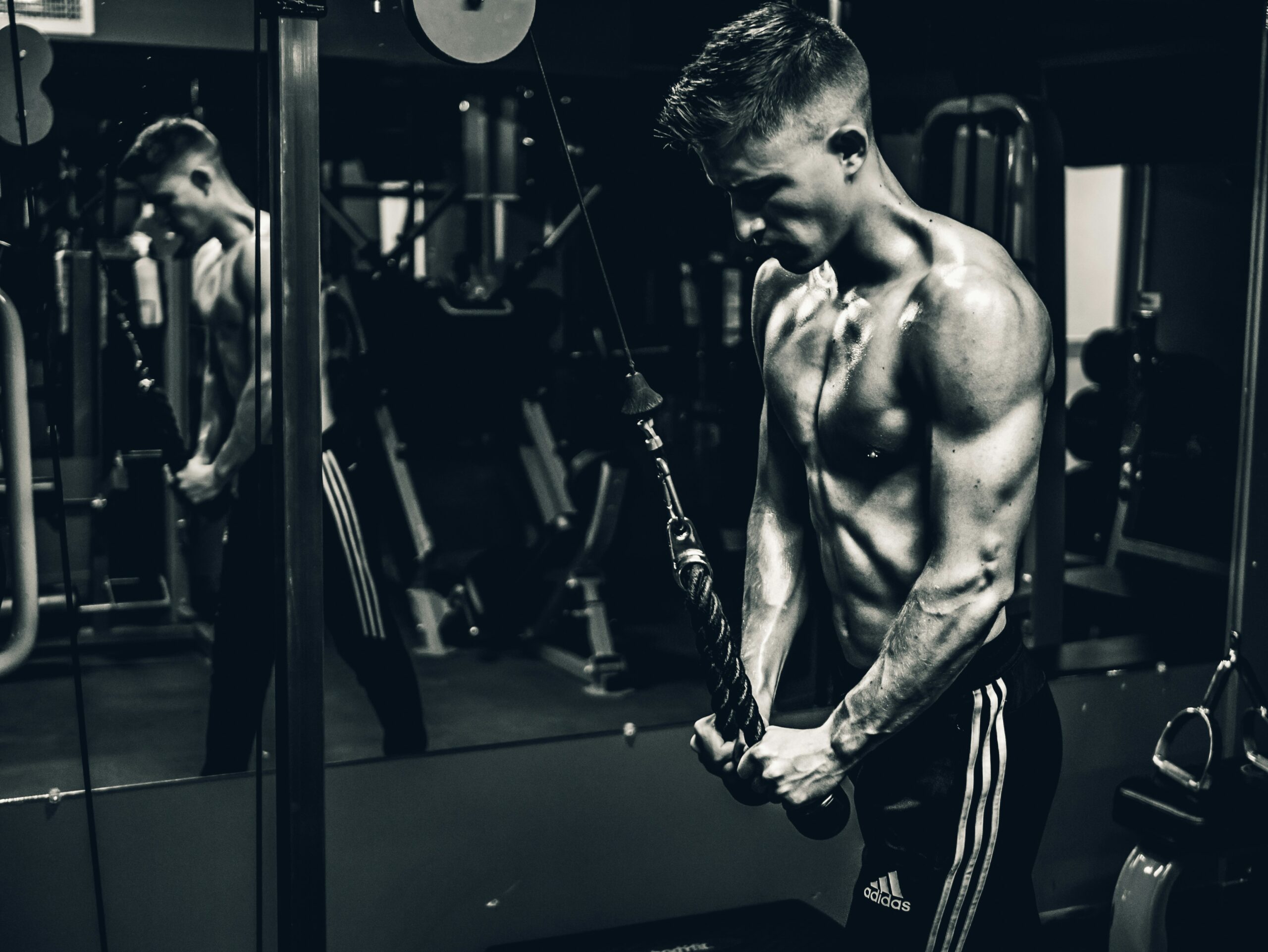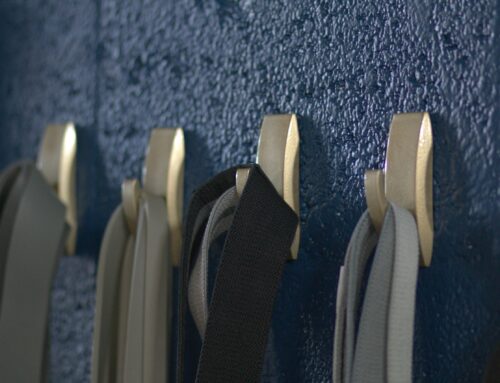
Understanding Tricep Anatomy
Before delving into the specifics of tricep workouts, it is crucial to grasp the anatomy of the triceps brachii. The triceps brachii, commonly known as the triceps, is a large muscle group located on the back of the upper arm. It comprises three distinct heads: the long head, the lateral head, and the medial head. Each of these heads plays a unique role in arm movement and is engaged differently during various exercises.
The long head of the triceps is the largest component and originates from the scapula, extending across the shoulder joint. It significantly contributes to shoulder extension and stability, emphasizing the importance of incorporating exercises that fully stretch and contract this head for optimal tricep development. Common exercises targeting the long head include overhead tricep extensions and tricep dips.
The lateral head, positioned on the outer side of the upper arm, originates from the humerus. It gives the triceps their distinct horseshoe shape and is primarily engaged during movements that involve elbow extension with the arms positioned away from the body. Exercises such as tricep pushdowns and close-grip bench presses are particularly effective in activating the lateral head.
The medial head, the smallest of the three, is located deeper within the upper arm near the elbow. It also originates from the humerus and plays a key role in elbow extension. This head is engaged in almost all tricep exercises but becomes the primary mover during more isolated movements. Tricep kickbacks and rope pushdowns are excellent for specifically targeting the medial head.
A thorough comprehension of the tricep anatomy aids in selecting the right exercises that ensure balanced muscle development and prevent overuse injuries. By understanding how each head functions and the exercises that best activate them, one can achieve better muscle activation, leading to more effective and safer tricep workouts.
Common Mistakes and How to Correct Them
When it comes to tricep workouts, many gym-goers unknowingly commit mistakes that hinder muscle growth and overall effectiveness. Understanding these common errors and learning how to correct them is crucial for achieving desired results. We’ll delve into some prevalent mistakes and provide actionable tips for correction.
First and foremost, improper form remains a significant issue. Many individuals fail to maintain correct wrist alignment during tricep exercises, which can lead to undue stress on the joints and ineffective muscle targeting. To correct this, it is essential to keep the wrists neutral and avoid excessive flexion or extension. This helps in isolating the tricep muscles more effectively.
Another common mistake is neglecting the full range of motion. Partial repetitions may seem easier but they limit muscle engagement and development. To fully benefit from tricep exercises, ensure that each movement goes through the complete range of motion. For instance, when performing tricep extensions, lower the weight all the way down before extending back up to fully engage the muscle fibers.
Over-reliance on momentum is also a frequent issue. Using momentum typically means swinging the weights, which not only reduces the effectiveness of the exercise but can also pose a risk of injury. To counter this, focus on controlling both the concentric (lifting) and eccentric (lowering) phases of the movement. Slowing down the negative phase of the lift can enhance muscle activation and ensure that the triceps are doing the work rather than other muscle groups or inertia.
Lastly, ignoring auxiliary muscles can be detrimental. The triceps work in conjunction with other muscles, such as the shoulders and core, to stabilize and support movements. Engaging the core during tricep exercises can improve stability and form, leading to more efficient lifts. Additionally, incorporating exercises that target auxiliary muscles can contribute to overall strength and balance, thereby enhancing tricep development.
By recognizing and addressing these common mistakes, gym-goers can make significant strides in their tricep workouts. Maintaining proper wrist alignment, utilizing the full range of motion, controlling lift phases, and engaging auxiliary muscles are key strategies for avoiding errors and maximizing muscle growth.
Effective Tricep Training Techniques
Maximizing tricep growth involves employing a combination of effective techniques to ensure consistent and substantial muscle development. One foundational method is progressive overload, which necessitates gradually increasing the resistance or weight used in your exercises. By consistently challenging your muscles with heavier loads, you stimulate hypertrophy and improve muscle strength over time.
It’s equally important to vary your rep ranges to target different muscle fibers and prevent plateaus. Incorporating a mix of high-rep, low-weight sets with low-rep, high-weight sets can create a comprehensive stimulus for muscle growth. For example, performing sets of 8-12 reps for hypertrophy, 4-6 reps for strength, and 15-20 reps for endurance can offer balanced development.
Compound movements are crucial for maximizing workout efficiency and hitting multiple muscle groups. Exercises like the tricep dip and close-grip bench press engage not only the triceps but also the chest and shoulders, allowing for greater overall functional strength. Specific exercises such as skull crushers and overhead tricep extensions are also pivotal for isolating and effectively working the tricep muscles.
Structuring a tricep-focused workout plan requires careful consideration of exercise selection, rep ranges, and volume. A sample workout could include 3 sets of tricep dips, 3 sets of skull crushers, 3 sets of close-grip bench presses, and 3 sets of overhead tricep extensions, ensuring each exercise is performed with proper form and technique.
Moreover, understanding workout frequency and rest periods is essential for muscle recovery and growth. Training the triceps 2-3 times a week with sufficient rest days in between sessions can ensure optimal recovery. For example, allowing 48 hours of rest between tricep workouts can prevent overtraining and reduce the risk of injury.
Lastly, the importance of warming up and cooling down cannot be understated. A proper warm-up increases blood flow to the muscles and enhances flexibility, while a cool-down helps reduce muscle soreness and improve recovery. Incorporating dynamic stretches and light cardio before and static stretches after your workout can significantly contribute to effective training.
Recovery and Nutrition for Optimal Tricep Growth
Recovery and nutrition are critical elements in achieving optimal tricep growth. Overloading the triceps without providing them with sufficient rest can lead to overtraining, which hampers muscle repair and increases the risk of injury. An effective recovery strategy begins with adequate sleep, as restorative sleep cycles are essential for muscle repair and growth. Aim for 7-9 hours of quality sleep each night to ensure all your training efforts come to fruition.
Nutrition significantly influences muscle recovery and growth. Protein is a fundamental nutrient in the repair and development of muscle tissue. Consuming an adequate amount of protein daily is crucial, with recommendations typically ranging from 1.6 to 2.2 grams of protein per kilogram of body weight for those actively engaged in resistance training. Incorporating a diverse array of protein sources, including lean meats, dairy, legumes, and plant-based options, will ensure a comprehensive amino acid profile, which is essential for muscle synthesis.
Hydration is often an overlooked aspect of recovery, yet it is vital for maintaining muscle function and promoting nutrient delivery to muscle cells. Consuming water regularly throughout the day, and particularly around your workout times, aids in preventing dehydration and supports optimal performance and recovery.
Supplementation can also complement a balanced diet to amplify muscle growth and recovery. Branched-chain amino acids (BCAAs), omega-3 fatty acids, and creatine monohydrate are among the supplements that have shown efficacy in supporting muscle repair and reducing muscle soreness.
In addition to nutritional strategies, physical recovery techniques are indispensable for maintaining healthy triceps. Incorporating dynamic and static stretching routines helps to increase flexibility and reduce stiffness in the muscles. Foam rolling can enhance blood flow to the muscle tissues and aid in the breakdown of fascia adhesions, promoting faster recovery. Heat and cold therapy have their respective benefits, with heat improving blood flow and relaxing muscles, and cold reducing inflammation and numbing acute pain.
By judiciously combining these recovery and nutritional strategies, you can ensure that your triceps not only grow efficiently but remain resilient and less prone to injury, thus optimizing your tricep workouts for long-term success.
About the author : Tricep
We valued your need and thought . Main aim is to keep you fit with our suggestion and help let have a lifestyle
Latest videos
The Vital Role of Exercise in Maintaining Our Health
Understanding Exercise and Its Impact on HealthExercise is a cornerstone of a healthy lifestyle, often regarded as a vital factor in promoting overall health and well-being. Engaging in regular physical activity not only enriches the [...]
The Role of Triceps in Bench Press: Maximize Your Gains
```html Understanding the Bench Press and Its Muscle Groups The bench press is a compound exercise, revered in the strength training community for its ability to enhance upper body power and muscle development. At its [...]
Join our mailing list today
Insider offers & flash sales in your inbox every week.
Curabitur non nulla sit amet nisl tempus convallis quis ac lectus dolor sit amet, consectetur adipiscing elit sed porttitor lectus.










